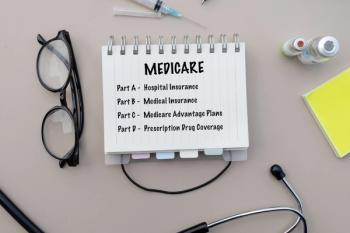
How Inappropriate Antibiotic Prescribing Harms Patients
According to a study, patients are frequently prescribed broad-spectrum antibiotics instead of narrowly tailored antibiotics, which would be more optimized to treat them.
Antibiotics are an indisputably necessary component of modern medical care. However, a new study reveals the damage resulting from inappropriate prescribing and usage. Washington University in St. Louis and The Pew Charitable Trusts did a deep dive into claims filed by people with private health insurance in order to assess the financial and physical costs of this misuse.
The study included medical claims for nearly 3.3 million adults diagnosed on an outpatient basis with pharyngitis, sinus infection, influenza, upper respiratory infection, nonsuppurative ear infection (ear infections without pus), or bronchitis. The team tallied the adverse drug events (ADEs) occurring after antibiotics were prescribed unnecessarily—in the case of viral infections—or after antibiotics other than those recommended as first-line therapies were prescribed for bacterial conditions.
While the claims were dated anywhere from April 2016 to September 2018, in order to encompass a single calendar year the researchers zeroed in on the excess costs incurred in 2017. They found that inappropriate antibiotic prescriptions for adults that year racked up nearly $69 million: $49.6 million for pharyngitis sufferers, and $19.1 million for people with sinus infections.
The non-financial harms were great, too. When subjects were treated for pharyngitis or sinus infections with antibiotics not considered first-line treatments, they saw a rise in ADEs; especially noteworthy was the nearly threefold increase in the risk of C diff infection when patients were not prescribed penicillin or amoxicillin for pharyngitis. Patients in this category also had higher rates of nausea, vomiting, stomach pain, and diarrhea.
Rather than receiving first-line therapies for these maladies, patients in the study frequently were prescribed broad-spectrum antibiotics. While these do have a role to play in battling bacteria, more narrowly tailored antibiotics are considered the optimal choice in these cases.
In situations in which antibiotics weren’t indicated, such as when a patient had a viral infection, the study team did not find comparable excess spending after antibiotics were prescribed. Physically though, there was a cost: The risk of a general allergic reaction was almost fourfold higher in patients who received antibiotics after being diagnosed with viral upper respiratory infections, bronchitis, or nonsuppurative ear infections. Other potential outcomes included vulvovaginal candidiasis, vaginitis, and non-C Diff diarrhea.
Interestingly, the study revealed that inappropriate antibiotic use for bronchitis was linked to a cost savings. While the researchers are unsure exactly why, they theorize that patients who received a prescription were less likely to pursue additional health care as they recovered, while patients who didn’t get an antibiotic may have been less comfortable with their ongoing symptoms and sought further medical advice.
Why are so many people being prescribed antibiotics inappropriately? “We do postulate that there is a role of patient expectation,” David Hyun, MD, project director for the antibiotic resistance project at the Pew Charitable Trust and an author of the study, told Contagion. “A lot of times those expectations are shaped by past experience.” In other words, if a patient has been given antibiotics in the past for viral infections and those infections cleared up in a week, as they tend to do on their own, the patient may believe another prescription is necessary.
Unfortunately, a patient’s expectation of receiving antibiotics may be interpreted by clinicians as pressure. Add to that the fact that clinicians may truly be uncertain whether an infection is bacterial or viral. “Sprinkle on top of that the pressure of time,” Hyun noted, referring to the fast pace at which providers feel they must see patients. It’s no wonder some find it easiest to just write a script for antibiotics rather than counsel patients about their appropriate use.
The problem, of course, is that antibiotics are not a benign therapy, as the individual ADEs in this study underscore. Collectively, antibiotic use leads to antibiotic-resistant bacteria, which is responsible for 2.8 million infections and 35,000 deaths per year in the US, according to a Pew Charitable Trust fact sheet. Promoting antibiotic stewardship must be a priority for healthcare systems and providers alike.
Hyun stresses that providers need support and guidance to make correct antibiotic choices for patients. They also should take advantage of tools and strategies that assist them in engaging with patients who ask for antibiotics inappropriately. Many healthcare systems and public health websites offer scripts that clinicians can use to guide them through these conversations.
The study’s limitations include its restriction to healthy adults with commercial health insurance; Medicare and Medicaid recipients and uninsured populations might yield different results. Also, the study’s reliance on medical claims means data might have been skewed by inaccurate coding.
Reference
1. Inappropriate antibiotics for nonhospitalized kids cost US at least $74 million. Washington University School of Medicine in St. Louis. May 26, 2022. Accessed March 22, 2023. https://medicine.wustl.edu/news/inappropriate-antibiotics-nonhospitalized-kids-cost-us-74-million/
Newsletter
Pharmacy practice is always changing. Stay ahead of the curve with the Drug Topics newsletter and get the latest drug information, industry trends, and patient care tips.













































































































































